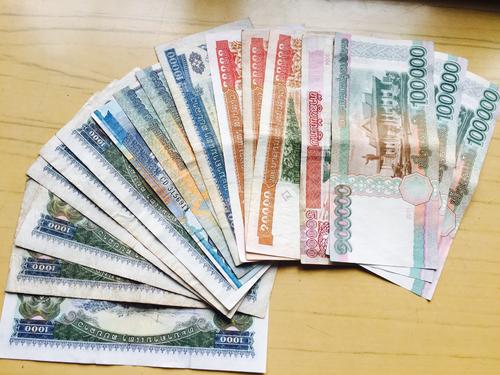
For a long time, the Lao government has been faced with the challenge of poverty alleviation and capital investment in rural development. The Central Bank of Laos is the competent department of financial industry in Laos, which is a primary financial institution. The banks and non bank financial institutions affiliated to the central bank are secondary financial institutions. In the banking system, there are state-owned commercial banks, joint venture banks, private commercial banks, rural financial and micro financial institutions, and branches of foreign banks. Non bank financial institutions include insurance companies, leasing companies and pawnbrokers. Rural financial institutions in Laos is a subsystem of the financial system. The agricultural related financial institutions in Laos mainly include the Agricultural Bank for the promotion of Laos, policy banks and micro financial institutions; non bank financial institutions refer to insurance companies, credit companies, pawnbrokers, and private finance (money lender), etc., which constitute the main body of rural financial institutions in Laos.
The Agricultural Bank for the promotion of Laos is the only state-owned commercial bank financial institution that provides agricultural services such as agriculture and forestry, animal husbandry and animal husbandry. The financial service objects include crop production, handicraft industry and small and medium-sized enterprises engaged in agriculture in rural areas. In addition, the Lao Agricultural Bank for the promotion of agriculture is also involved in bilateral and multilateral international cooperation projects, which are carried out in rural areas.
The Lao policy bank was established in 2007. It is a financial institution specially set up by the Ministry of Finance and the Central Bank of Laos for the purpose of poverty eradication and poverty alleviation in Laos. The service business of Laos policy bank is a financial institution that provides rural poverty alleviation credit financial services and provides financial resources for rural economic and social development. Policy bank is the only financial institution in Laos that does not accept public savings deposits.
Lao microfinance institutions are cooperative development projects set up in rural areas of Laos by Lao government departments or entity organizations receiving foreign aid, including supporting the establishment and development of rural banks in rural areas, microfinance of rural development funds and other micro financial institutions. They are mainly financial institutions for poor and low-income families, and are provided to urban and rural areas in addition to bank financial institutions Financial institutions providing financial credit services. ① The service of micro financial institutions in rural areas started very late. It has the characteristics of wide range of services, strong and flexible financial services penetrating into rural areas. It is one of the financial industries that the Lao government attaches great importance to.
During the "sixth five year plan" period of Laos, the agricultural financial support in Laos is not strong, and the number of farmers participating in agricultural credit is small. As of March 2011, there are 104000 farmers participating in agricultural credit, accounting for 13% of all farmers. Taking Udomxay Province as an example, it is the province with the highest proportion of credit, and more than a quarter of the farmers in the province have participated in agricultural credit. In addition, more than half of the agricultural credit in Laos is not guaranteed, and only 30% of the credit farmers use land as collateral. Generally speaking, farmers' access to agricultural credit is very limited, with 55% through commercial banks (mainly the Lao Agricultural Bank for promotion) and 40% through other agricultural financial banks. The main purpose of farmers' access to credit is to increase agricultural investment and purchase livestock and poultry, accounting for 51% and 30% respectively. Only 16% of the credit funds are used to purchase agricultural machinery and tools. In northern Laos, credit is more likely to be used to purchase livestock and poultry. For example, 59% of the credit loans in Luang Prabang province purchased livestock, 25% for crop input and 14% for livestock investment. In Laos, the scale of farms is directly proportional to the credit level. Large farms are more likely to obtain loans from the Agricultural Bank for the promotion of Laos, while the small-scale farmers mostly obtain the required funds from other agricultural related financial institutions.
During the "Seventh Five Year Plan" period of Laos, with the development of Laos' financial industry, the banking business and demand deposit business in rural areas of Laos are welcomed by the people, and the scale and profit increase year by year.
转发0评论2